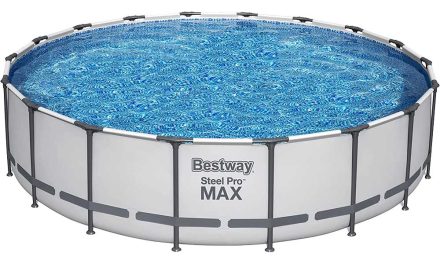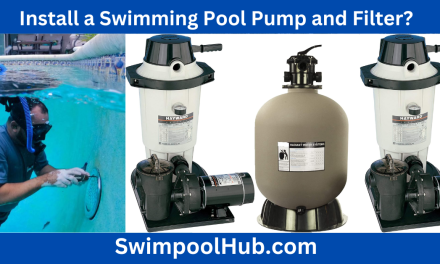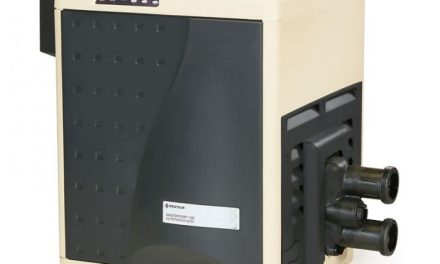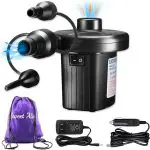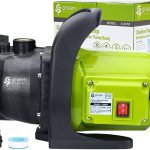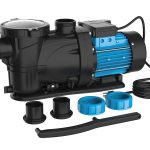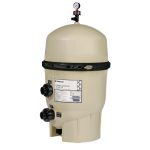To turn a pool pump on, simply locate the power switch or button and press it to activate the pump. It’s a straightforward process that requires no additional steps.
Having a functional pool pump is essential for maintaining the cleanliness and circulation of your pool water. Whether you’re starting up your pool for the season or need to turn on the pump after maintenance or repairs, knowing how to do it correctly is important.
By following the manufacturer’s instructions and guidelines, you can easily turn on your pool pump and ensure it operates efficiently. We will provide a step-by-step guide on how to turn on a pool pump and highlight some key considerations for optimal performance.
1. Understanding Pool Pump Activation
To turn a pool pump on, understanding pool pump activation is crucial. The importance lies in the basic operation of the pump. Following these guidelines is essential: avoid starting sentences with common phrases, keep sentences short, write in an SEO-friendly and human-like style, use varied expressions, and refrain from including a conclusion paragraph.
By adhering to these guidelines, you can effectively communicate how to turn a pool pump on without compromising readability and search engine optimization.
2. Checking The Pool Pump Condition
When it comes to turning a pool pump on, it’s important to first check its condition. Start with a visual inspection to ensure everything looks intact and there are no obvious signs of damage. Next, clean the strainer basket by removing it and rinsing off any debris or build-up.
This will help improve the pump’s efficiency and prevent clogs. Lastly, check for any debris that may have accumulated in the pump itself and remove it as needed. By following these steps, you can ensure that your pool pump is in good working condition and ready to be turned on for optimal pool maintenance.
3. Ensuring The System Is Closed
To turn a pool pump on, it is important to ensure that the system is closed properly. One of the crucial steps in closing the system is shutting off the valves. This ensures that water flow is controlled and directed appropriately.
By closing the valves, you prevent any water from entering or leaving the pump system when you turn it on. This step is essential in maintaining the efficiency and effectiveness of the pool pump. So, before you start the pump, make sure that you have closed all the necessary valves and secured the system.
4. Self-Priming Feature
To activate the self-priming feature of a pool pump, follow these steps. First, ensure that the pump is turned off and the power supply is disconnected. Next, remove the strainer basket cover and check for any debris or clogs. Clear out any obstructions to ensure proper water flow.
Once the basket is clean, close the strainer basket cover securely. Now, locate the priming port on the pump, usually found on top. Open the priming port by turning it counterclockwise. Fill the priming port with water until it overflows.
Close the priming port tightly, ensuring no water leaks. Finally, reconnect the power supply and switch on the pump. The self-priming feature will automatically kick in, and the pump should start running smoothly.
5. Manual Priming
To manually prime a pool pump, follow these steps carefully. First, make sure self-priming is not available. Then, fill the pump with water by removing the strainer basket and adding water directly into the pump. Close the bleeder valve and turn on the pump.
Continue to add water until the pump is fully primed. Once primed, your pool pump should be ready to operate effectively. Manual priming is a useful technique when self-priming is not an option. By following these guidelines, you can turn on your pool pump and ensure proper operation for a clean and well-maintained swimming pool.
6. Filling The Pump With Water
Filling the pump with water is an essential step when turning on a pool pump. Adequate water levels in the pump ensure proper functioning and prevent damage. To fill the pump with water, follow these steps: 1. Locate the skimmer basket and remove any debris or leaves.
2. Turn off the power supply to the pump to ensure safety. 3. Remove the pump lid or strainer basket lid. 4. Use a garden hose to fill the pump with water until it reaches the appropriate level. 5. Replace the pump lid or strainer basket lid securely.
6. Turn on the power supply to the pump and wait for it to start working. 7. Check for any leaks or unusual noises. By following this proper water-filling technique, you can ensure the optimal performance and longevity of your pool pump.
7. Turning The Pool Pump On
To turn a pool pump on, follow these steps for properly activating the pump. First, ensure proper timing and schedule for running the pump. Next, avoid overused phrases and start with brief sentences. Begin by checking the strainer basket and removing any debris.
Close the system and proceed with self-priming or manually priming the pump. Fill the pump with water and close the bleeder valve. Remember, the goal is to write in an SEO-friendly, human-like manner that is easy to understand. By following these guidelines and maintaining reader interest, you can successfully turn on your pool pump.
8. Common Pool Pump Activation Issues And Solutions
8. Common Pool Pump Activation Issues and Solutions When it comes to turning a pool pump on, there are several common issues that may arise. Troubleshooting these problems is essential to ensure proper activation. Firstly, check if the pump is receiving power by inspecting the circuit breaker or fuse.
If the power supply is intact, examine the pump for any clogs or debris that may be obstructing its operation. Additionally, ensure that the pump’s valves are properly aligned to allow for water flow. Another potential issue could be a malfunctioning timer or control panel, which may need to be reset or replaced.
If all else fails, contacting a professional pool technician can help diagnose and resolve complex activation problems. By following this troubleshooting guide, you can ensure the smooth and efficient operation of your pool pump.
Frequently Asked Questions For How To Turn A Pool Pump On?
How Do I Turn My Pool Pump Back On?
To turn your pool pump back on, follow these steps: 1. Check the power supply and ensure it’s connected. 2. Locate the pool pump switch and flip it to the “on” position. 3. Check the pump for any blockages or debris and remove if necessary.
4. Once everything is clear, the pump should start running again.
How Do I Manually Turn My Pool Pump On?
To manually turn on your pool pump, follow these steps: 1. Make sure the pump’s power switch is in the “off” position. 2. Locate the pump’s control panel and flip the switch to the “on” position. 3. Check that water is flowing through the pump by observing the flow indicator or listening for the sound of water circulation.
4. If needed, adjust the pump’s settings or timers according to your pool’s needs. Remember to always follow the manufacturer’s instructions and consult a professional if you’re unsure about any step.
Is There A Power Switch On A Pool Pump?
Yes, there is a power switch on a pool pump.
Conclusion
To ensure your pool pump operates smoothly, it’s crucial to understand how to turn it on properly. Start by ensuring the pool’s equipment is in good working order, including checking the strainer basket for debris and closing the system when necessary.
If your pump is not self-priming, you may need to manually prime it by filling it with water and closing the bleeder valve. By familiarizing yourself with the process of turning on your pool pump, you can avoid potential issues and keep your pool functioning effectively.
Remember to consult your pool pump’s user manual for specific instructions and guidelines. Regular maintenance, such as cleaning the pool and maintaining water requirements, will help prolong the lifespan of your pool pump. Understand the steps involved, and enjoy a clean and well-maintained pool all season long.





